Rhinoceros follow the same rule for all animals and that is, “the bigger the animal the longer it lives”. Rhinoceros are solitary beings. Instead of being in a herd, they’d rather roam alone in the depressing desert or the lonely tropical forest. It is pretty rare to even meet one in the wild.
So most of the data about them are collected through inspection in captivity. The endangered herbivore species are kept in many eco-parks, reserve centers, and zoos. The average lifespan for a rhinoceros is 50 years.

Rhino Life Cycle
Their 5 species are found in both Africa and Asia. All of them are herbivores. Rhinoceroses tend to live alone. Males mate with females and leave to find another. Females roam alone for the rest of the days until their baby arrives.
Usually, they have a gestation period of about a year and a half. After the struggle, a single calf is born. Calves tend to live with their mother for up to 4 years. Males leave the company of their mothers earlier than females. Then begins their struggle in the wild.
Males look for free territories to claim for themselves. Thus they end up in a fight with other alpha males. The winner gets to keep the territory and all the girls in it.
Females wait longer than males to leave their mother’s company. They end up having babies and nurturing them.
After following this cycle several times, they die. Their deaths are rarely because of natural causes. They either die fighting with a new male or get poached brutally. Extremely fortunate ones may have a peaceful death.
Care of the young
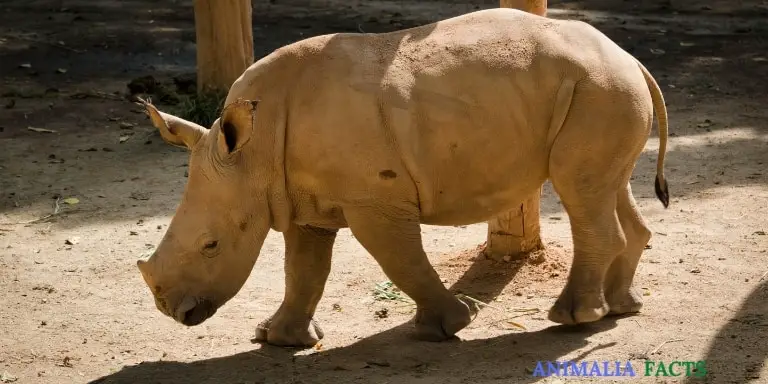
Female rhinoceroses give birth to a single calf after 18 months of pregnancy. Initially, the baby can weigh up to 30 to 60 kilograms and starts walking after some time of birth. The baby doesn’t have a horn initially. So the only protection it has is from its mother.
Mothers feed only milk to the calf for a few weeks. Then she takes her baby to familiarize it with soft grass and other vegetation in the wild. Breastfeeding continues for about 16 to 18 months.
The mother acts as the ultimate protector for her baby. The calf learns everything for its mother that is needed to survive in the wild. Mother rhino fights with predators and even with male rhinos to save her child.
Growing up period
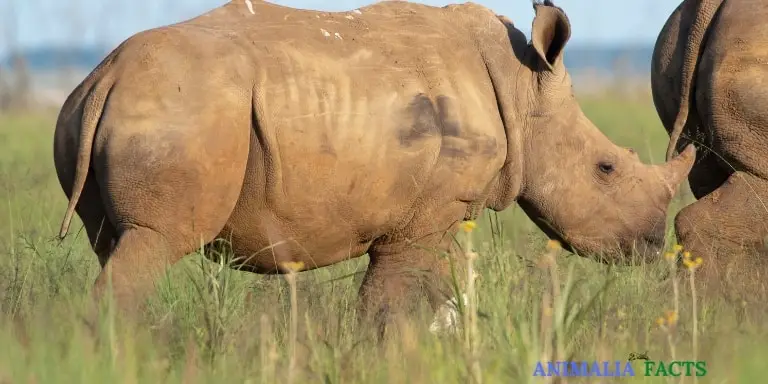
The growing up period of rhinoceroses is different for males and females.
Calves start to grow fast. The shoulder height of the baby reaches the mother’s groin after around 3 months. After approximately 1 to 2 years, the shoulder of the calf reaches its mother’s vulva. But it is still dependent on its mother.
After about 3 to 4 years, the calf is almost an adult. But it still has some growing to do.
Males leave their mothers after about 2 years of companionship. After that, they try and find their land.
Females accompany their mothers for about 4 years. After that, they leave to mate with males and have babies.
Growing up some species live on grass and vegetation, some like to eat leaves, berries, or soft branches of trees.
Rhinoceroses are extremely territorial beings. They spray urine in different places or plants to claim the place as their territory. Experts are unsure of where the territory begins and where it ends.
Other rhinoceroses can know from the smell of urine and defecation about the territory of other alpha males. A pile of dung may contain useful information for other rhinoceroses. From the smell of the pile, they can know the age, size, etc about the male in charge of the territory.
An adult rhino
Males reach their offspring after 2 years. They start to look for land and females to claim. They start mating after 2 years of companionship with their mothers. The alpha males mate with other females and never claim the responsibility of the child.
Females mate after around four years of age. They reproduce every 2.5 to 5 years. This whole time they spend helping to raise their child. They refuse to mate during this time. As a result the males sometimes may attack the baby to mate with its mother. But the mother rhino is super protective. Even though many rhino babies die in such incidents.
Adults weigh more than females. White rhinoceros are the biggest of all of their species. Average adult white rhino males weigh up to 2700 kilograms and females can weigh up to 2000 kilograms. Sumatran ones are the smallest and can weigh from 600 to 1000 kilograms.
The senior age
The horned beasts live longer in captivity than in the wild. Fausta, the oldest rhino in the world, died in Tanzania at the age of 57 years. It was kept in the Ngorongoro Conservation Area. She was fortunate enough to die of natural causes.

How long do rhinoceros live?
These giants live from 35 to 45 years in the wild. But they can live longer than that in captivity. The average captive rhinoceros lives for about 35 to 55 years. Because in captivity they are manually taken care of and given protection against poachers.
Different species have different lifespans. But most of them usually die at the age range of 35 to 48 years.
White rhinoceros
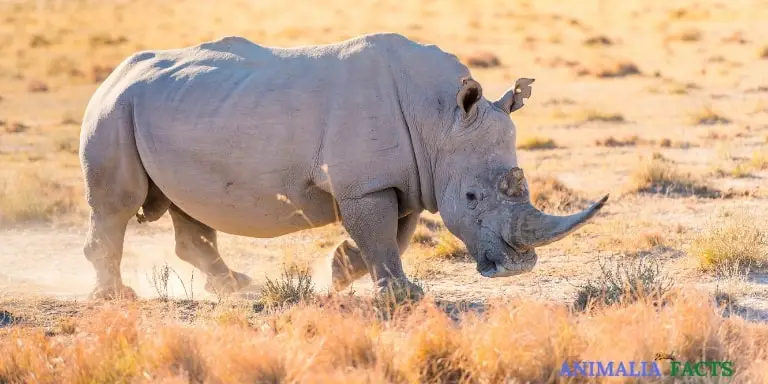
White ones are the second biggest land mammals after elephants. The massive animals are found mostly in South African open habitats. Unfortunately, they are more targeted by poachers than other species. As a result, their average lifespan is decreasing and slowly they are going extinct.
The white Rhinos of South Africa can die at the age of about 35 to 40. Their gestation period lasts for around 16 months. Females breed a single calf every three to four years.
Black rhinoceroses
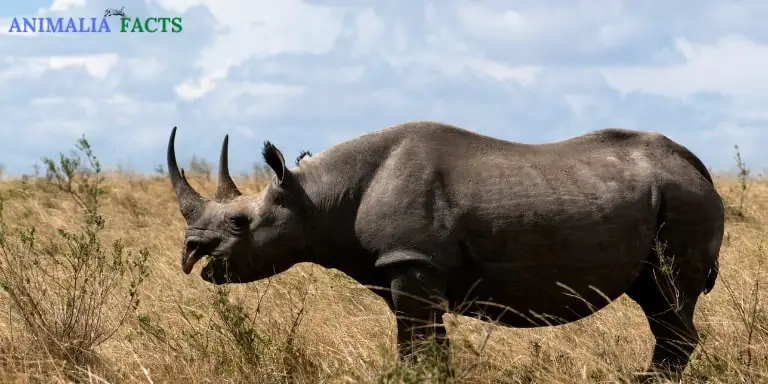
These species are mostly found in Africa’s savannas, grasslands, and tropical bushlands. They follow a browsing lifestyle and can die at the age of about 35 to 40. Their gestation period is about 15 to 16 months long. Mothers breed a single child every 2.5 to 3 years. But sometimes twins can be born too.
Though named black, their skin is not like that. The areas that these animals live in have black soil mostly. As a result, their skin is often covered with black soil. Experts assume this as a reason for the beast to be named that way.
Greater one-horned Rhinos
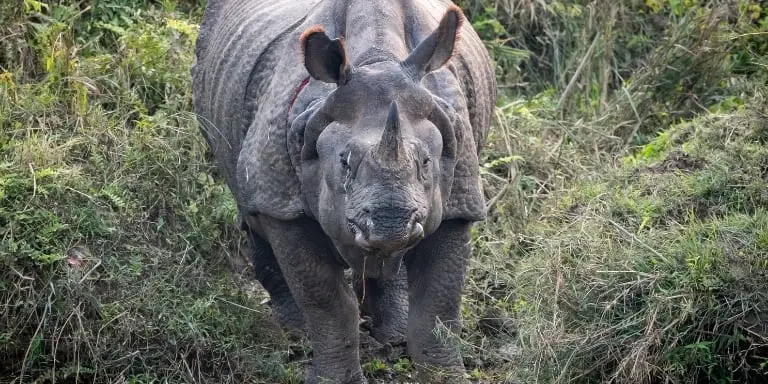
The species are found only in the riverine grasslands and their adjacent woodlands of India and Nepal. They follow a grazing lifestyle and die at the age of about 35 to 45. Their gestation lasts for about 15 to 16 months. Mothers give birth to a single baby every 2 to 3 years.
Sumatran species
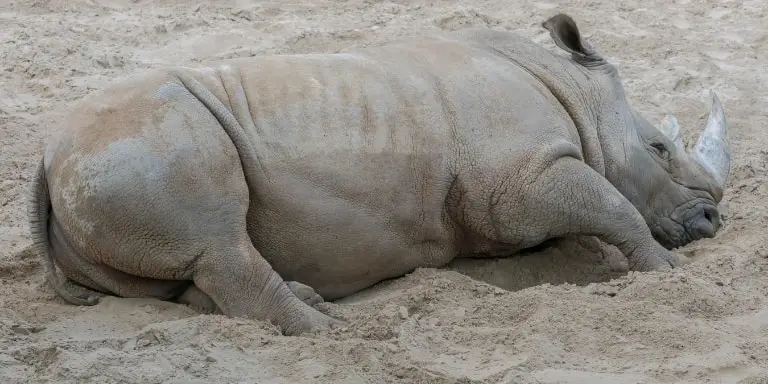
These are the smallest of all species and are found only in the protective ranges of Indonesia. Sumatran rhinoceros die at the age of about 35 to 40. The gestation period lasts for about 16 months. Female cows breed a single baby after about every 3 years.
Javan Species

These are the rarest of all species and are found exclusively only in Ujung Kulon National Park in Indonesia. Experts aren’t sure of their longevity but assume them to die at the age of about 30 to 40 years. Gestation is also unsure and presumed to be around 15 to 17 months as other rhinos. Mothers approximately breed a single calf every 2 to 3 years.
Conclusion
Wildlife enthusiasts have always wondered about how long do rhinos live. After a fascinating life cycle of roaming the plains and taking care of the young, they eventually leave the earth. It is most unfortunate that their numbers are decreasing daily due to poaching and illegal killings. Rhinoceroses are being killed even as we are having a discussion
Related Posts:
